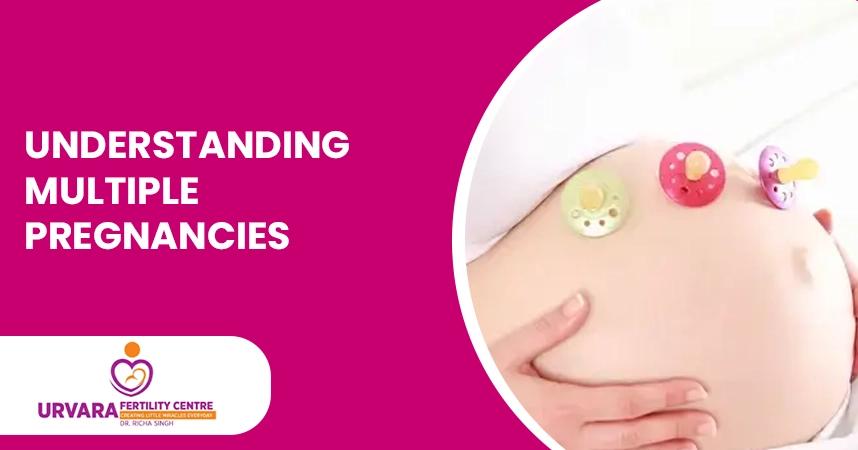
Understanding Multiple Pregnancies: Types, Detection, and Potential Side Effects
Multiple pregnancies occur when a woman is carrying more than one fetus in her womb. These pregnancies can be complex, and understanding them is crucial for expecting parents and healthcare providers. This blog delves into the different types of multiple pregnancies, how they are detected, and the potential side effects associated with them.
Types of Multiple Pregnancies
Multiple pregnancies are categorized based on the number of embryos and the way they develop. The two primary types are:
1. Twins
Twins are the most common type of multiple pregnancy and can be further classified into:
- Identical Twins (Monozygotic): Identical twins occur when a single fertilized egg splits into two embryos. They share 100% of their genetic material and usually have the same sex. Identical twins can be:
- Monochorionic-Monoamniotic (Mono-Mono): They share both the placenta and the amniotic sac.
- Monochorionic-Diamniotic (Mono-Di): They share the placenta but have separate amniotic sacs.
- Dichorionic-Diamniotic (Di-Di): They each have their own placenta and amniotic sac.
- Fraternal Twins (Dizygotic): Fraternal twins arise when two separate eggs are fertilized by two separate sperm. They share about 50% of their genetic material and can be of the same sex or different sexes. Each fetus has its own placenta and amniotic sac.
2. Higher-Order Multiples
Higher-order multiples include triplets, quadruplets, or more. These pregnancies can be:
- All Identical: Rare, occurring when multiple fertilized eggs split into several embryos.
- Mixed: A combination of identical and fraternal embryos, such as in a set of triplets where two are identical and one is fraternal.
- All Fraternal: Occurs when multiple eggs are fertilized separately and each embryo develops independently.
Detection of Multiple Pregnancies
Detecting a multiple pregnancy can be done through several methods:
1. Ultrasound
An ultrasound is the most common and reliable method for detecting multiple pregnancies. It can reveal the number of fetuses and their development stages. Early ultrasounds, often done in the first trimester, are especially useful for identifying the number of embryos and determining their type (identical or fraternal).
2. Blood Tests
Blood tests can also be indicative of multiple pregnancies. Higher levels of human chorionic gonadotropin (hCG) and alpha-fetoprotein (AFP) in the mother’s blood can suggest the presence of more than one fetus. However, these tests are not definitive and are typically used alongside ultrasounds for confirmation.
3. Physical Examination
In some cases, a healthcare provider might suspect a multiple pregnancy based on the size of the mother’s abdomen and other physical signs. However, a physical examination alone is not sufficient for a definitive diagnosis.
Potential Side Effects of Multiple Pregnancies
Multiple pregnancies can pose unique challenges and potential risks for both the mother and the babies. Some of the side effects and complications include:
1. Increased Risk of Preterm Birth
Multiple pregnancies are associated with a higher risk of preterm birth, where babies are born before 37 weeks of gestation. Premature babies may face complications related to their organs and overall development.
2. Gestational Diabetes
The risk of developing gestational diabetes is higher in multiple pregnancies. This condition can affect the mother’s blood sugar levels and increase the risk of complications during delivery.
3. Pre-Eclampsia
Pre-eclampsia, characterized by high blood pressure and signs of damage to other organs, is more common in multiple pregnancies. It can lead to serious health issues for both the mother and the babies if not managed properly.
4. Increased Risk of Cesarean Section
Due to the higher likelihood of complications and the position of the fetuses, multiple pregnancies often result in a cesarean section (C-section) delivery rather than a vaginal birth.
5. Fetal Growth Restriction
One or more of the fetuses in a multiple pregnancy might experience restricted growth due to limited space and resources in the womb. This can affect their overall health and development.
6. Twin-to-Twin Transfusion Syndrome (TTTS)
In monochorionic twin pregnancies, TTTS can occur when blood flow between the twins is uneven, leading to one twin receiving too much blood and the other too little. This condition requires careful monitoring and management.
Conclusion
Multiple pregnancies present unique challenges and considerations for both expecting parents and healthcare providers. Understanding the types, detection methods, and potential side effects is crucial for managing these pregnancies effectively and ensuring the health and well-being of both the mother and the babies.
Content Created By:

Cyberbizz Technologies
Team - Content Curator

